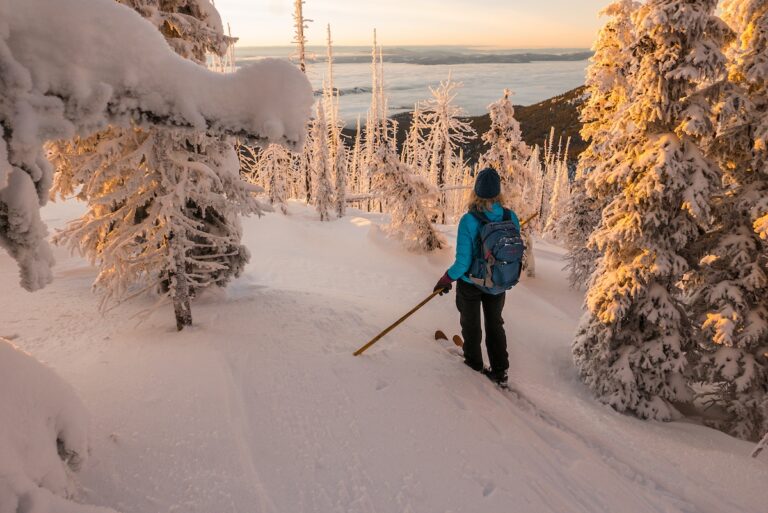It’s no secret that men occasionally band together in small groups, attempting to escape their familiar routines and defy limitations imposed in their lives. For most men, this can be accomplished with a weekly poker game. For Paul Fish and his three fellow members of the Into Thin Hair expedition (Jeff Johnson, Brent Johnson and Chris Kopczynski), it meant attempting to climb Mt. Fairweather in Alaska’s coastal range.
According to Fish, it’s one of the tallest glaciated climbs in the world, “almost from the sea to the peak,” and its weather (which did not allow the group to summit), is renowned to be anything but fair.
As the owner of Mountain Gear, Fish is no stranger to outdoor recreation, but he says he especially enjoys mountaineering, because “you get to see incredible things. It’s challenging, it pushes you, it’s exciting, it’s beautiful, and it’s good times with good people.”
The gear that took him there and back:
Boots: La Sportiva’s Spantik. “I’ve never been this happy with a pair of boots. I put them on and they felt like slippers, but worked like a boot.” Most of the trip was done on foot, using crampons and snowshoes to hike. The men generally carried an ice-ax in one hand and a trekking pole in the other, for safety and support. Fish used crampons and an ice-ax that weighed less than a pound each, both by Camp, and Leki Makalu titanium poles.
Snowshoes: Atlas 925. “We hadn’t planned on using them, but at the last minute I grabbed some from the rental shop at Mountain Gear.” He used them more on the trip than he did his originally-intended gear: Dynafit Alpine Touring skis.
Pack: Fish used a self-made pack during the trip, but his companions were happy with their packs by Gregory and Osprey.
“Most of my mountaineering gear was pretty old, and the difference between my old gear and the new stuff was substantial. For example, our packs before food were 36-40 pounds, including climbing gear, but thirty years ago it would have been closer to 60-70 pounds.”
Tent: Black Diamond’s Eldorado, which can be set up from the inside so that you can be protected while you make camp. “The tents were 5.5 pounds and roomy enough that Jeff and I didn’t kill each other during our six stormbound days, even after the iPod died.”
“I’d say the iPod and a solar charger are necessities when you’re climbing in Alaska because you get stormed in and can’t get out much.”
Underlayers: Once the team got to high altitudes, Fish says, he put on the Saturn Suit by Outdoor Research (OR) and never took it off. He attributed the comfort to the light, warm, PowerStretch fabric and the full crotch zip (“to minimize exposure”).
Coat: A softshell jacket from the North Face Flight series, and a prima-loft insulated Chaos jacket by OR for colder weather and snow.
Pants: ArcTeryx Theta AR with built-in gaiters. Whenever the temperature sank below ten degrees, he added the insulated Compressor Pant by Mountain Hardwear.
Sleeping Bag: By Valandré, weighing in at just over three pounds. “It was too warm most nights. It’s rated to negative twenty and I was cooking.”
Food: Backpackers Pantry freeze dried meals—”These wasn’t a meal we didn’t like, but we planned on 4000 calories per day, which is good if you’re climbing, but a lot of the time we were tenting, so we had too much food.”
Stoves: The MSR XGK.
Shovels: Black Diamond D9 shovels. They were lightweight and easy to use, Fish says, but with the amount of shoveling they had to do, at least one shovel with an extendable handle would have prevented some backache.
Hats: OR’s Sonic Balaclava, which is wind-proof, but “with non-windstopper fabric over the ears so I could hear.”
Gloves: OR Alti-mitts. He replaced the liner mitten with liner gloves for added versatility.
Goggles: “I was the only person who brought goggles and during the storms I was the only person happy.” Fish also carried Jumbo Glacier Glasses, renowned for their un-fog-ability.
Headlamp: By Petzl, but it being summer in Alaska, with 16 hours of daylight, he only used it twice.
GPS: Garmin Gpsmap 60CSx. “We spent a lot of time in white-outs, so the GPS was essential to have.”
One last tip for aspiring mountaineers? “Don’t forget your pee bottle, and make it a different shape than your water bottle,” Fish says.













